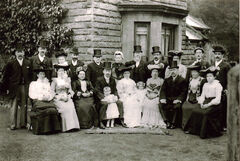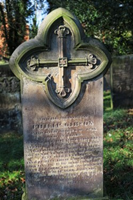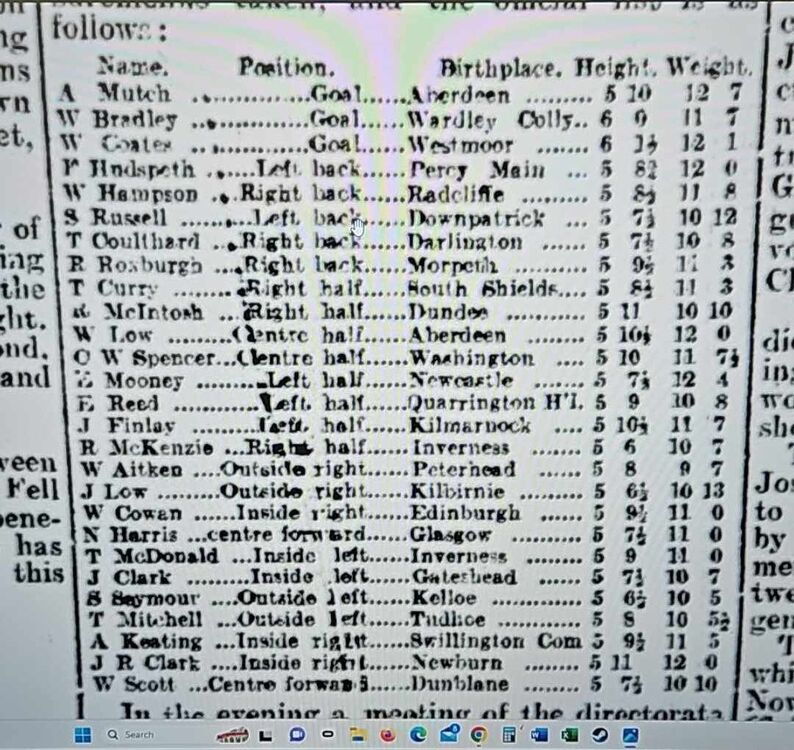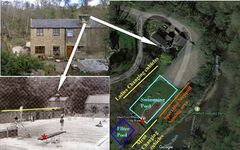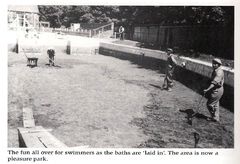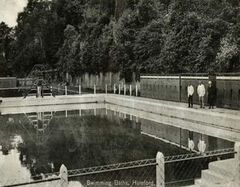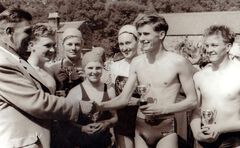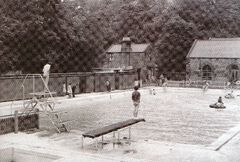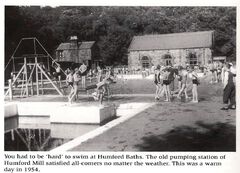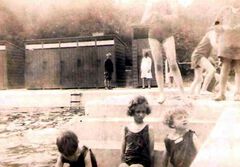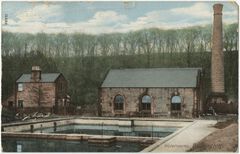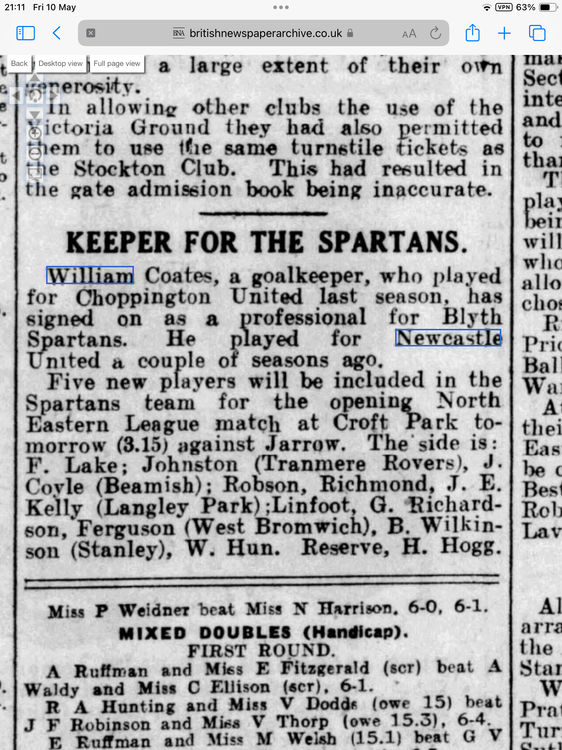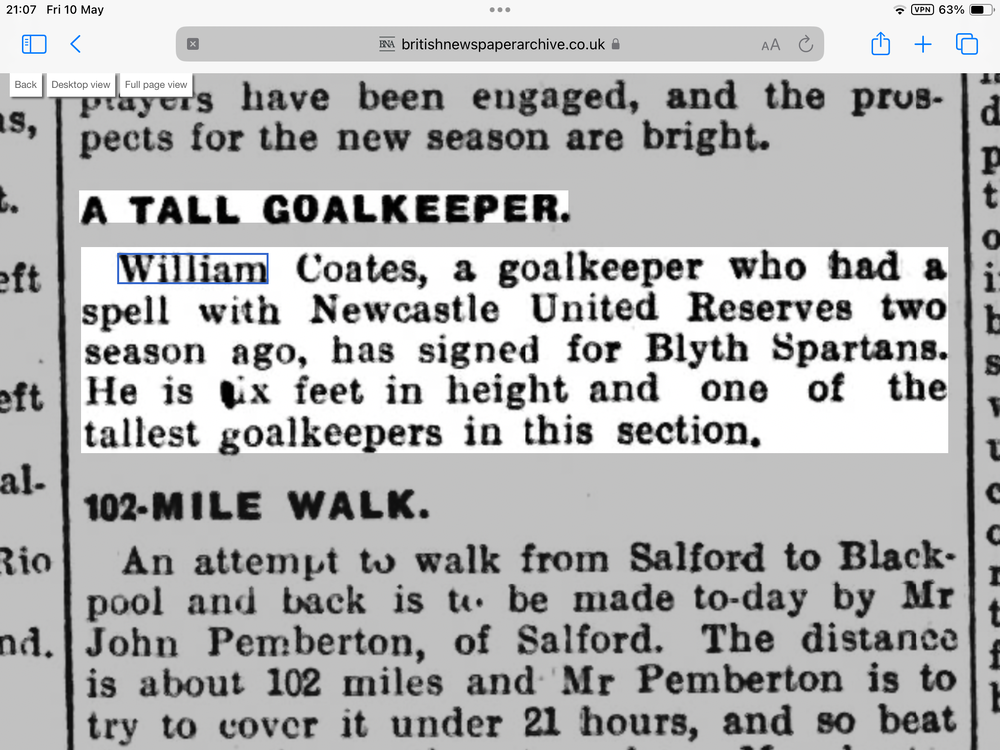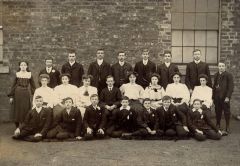On Bedlington.uk Now...
- Today
-

BBC archive - Northumberland Miners Picnic 1961
Vic Patterson replied to Alan Edgar (Eggy1948)'s topic in History Hollow
Great watch, x2, Looking for my then fiancé, family and tons of relatives (they came from far and wide) at my first picnic. Just re read the intro and see it was 1960, one year before we met, everyone except me would be there! -
Fantastic bit of detective work!
-
1961: The delight of the MINERS' BRASS BAND PICNIC | Monitor 54 | Weird and Wonderful | BBC Archive John Gibson introduces us to the brass band carnival and the colliery band contest at Bedlington, Northumberland which occurs each year - as a grand occasion for the family - mixing politics, beauty queens and, of course, music. John was representing Pegswood Colliery in Morpeth, Northumberland, which as he predicted was to soon close, doing so in 1969, some 101 years after it first opened. This short film was directed by Ken Russell. Clip taken from Monitor 54, originally broadcast on BBC Television on Sunday 3 July 1960.
- 1 reply
-
- 1
-

-
.thumb.jpg.7493ddab4a696108cf2b849323d3c155.jpg)
Wedding_Swann_Isabella_&_Mortimer_Samuel_1904
Canny lass commented on Kirnee's gallery image in Historic Bedlington
-
part 2. Sorry you've had to wait but my geraniums, fuchsias, dahlias and vegetable patch couldn't! Part 2 The Gibson family When Henry and Hannah Gibson experienced the sorrow of losing a child, albeit an adult child, in 1808 they probably couldn’t begin to imagine the sorrow which their son, Philip, and his wife Ann would start to endure just seven years later. Together, Philip and Ann had at least ten children. The firstborn, Henry born 1814, was followed by son James in 1815 but James lived only one day. The next child, daughter Barbara, was born 1816 and died at just 39 days old. The following year, 1817, a third son is born. He is named William but dies before reaching the age of four. As if this wasn’t enough, Philip’s father, Henry, also dies in 1818 and a further son, John born 1824, dies at the age of ten months. The children James, Barbara, William and John are also remembered on their grandfather’s gravestone, shown in my previous post. What a start to a marriage! Four infant deaths and Ann was probably pregnant on the occasion of each. She must have been a really tough woman – which later history in fact confirms. However, it’s not all doom and gloom for Philip and Ann. As well as the firstborn, Henry, there are five other survivors. Ann born 1820, lives to be 58 years old and Philip, born 1822, lives to be 36. At the time of his death, in Keekle near Whitehaven, Cumberland, he was unmarried and engineer to the Whitehaven Cleator and Egremont Railway. His sister Elizabeth, born 1827, dies also in Cumberland unmarried at the age of 69. Brother James, born 1829, reaches the age of 49 and the youngest, another Barbara* born 1916, attains the great age of 85 years. (*it was then common practice to re-use the names of children who had previously died. These were family names intended to ’live on’ in the family). Where in Bedlington the family lives is initially difficult to determine as postal addresses were almost non-existant but here is ample evidence that the family resided in Bedlington’s East End where the family business is recorded as early as 1814 and by 1841 it is evident that Philip and Ann lived in a house on Front Street in Bedlington’s East End and adjacent to the entrance to Bell’s Place – the house which now has a blue plaque. About the time of baby Henry’s birth in 1814, Philip’s entrepreneurial side comes into evidence when he, a grocer and draper, branches out into the world of iron goods – more specifically, nail making. His location on Front Street East is perfectly situated for this enterprise, just a stone’s throw from the Bebside slit mill which could provide materials (shown below on Greenwood’s map of 1828) and the river Blyth which provided a means of transport for the finished product by keel boat to the port of Blyth for further distribution nationwide – and perhaps even world wide, as the British Empire grew. Just where Philip’s workshop was located isn’t known and initially there may not have been any workshop. Nail-making was, at least in the Midlands, predominantly a cottage industry and I can find nothing to suggest that it wasn’t so even in Bedlington. The master nailer would purchase rods of iron from the slitting/slit mill. These were then distributed to nailers who hammered a point at one end and a flat head at the other. The finished article was then collected for shipment and the nailer was paid for his work which more often than not took place in a lean-to shed at a simple two up one-down nailer’s cottage which probably housed two families. This had the benefit that even wives and children could help in the work. Well worth a read is https://bromsgrovenailmaking.wixsite.com/nail-making/untitled-c139r a graphic description of the nail trade in Bromsgrove. The type of trade described there had it’s negative aspects in regard to payment of nailers though I am not suggesting that the Gibson family were engaged in anything of that nature. However, at some point Philip did have a workshop and it is documented that his son Henry ”after leaving school, served his apprenticeship as a chainmaker with his father” and worked at his trade for many years in ”his father’s workshop” (Morpeth Herald 12 APR 1902). In 1941 Philip, then about 50 years old, gives his occupation only as ”grocer” and his sons Henry and Philip, appear to have become involved in the industrial side of the business which has developed to include chainmaking. The youngest son, James, is still at school but will, on leaving, join the firm. Sadly, some five years later in 1846, Philip passes away after a short illness, aged 59 years. He is also buried in St Cuthbert’s churchyard. The business falls to his widow, Ann who continues to run it with the help of sons Henry, Philip and James. By 1855 the nail and chain manufacturing side of the business has expanded to include a blacksmith’s shop. The drapery side of the business has ceased to exist but in its wake appears an ironmonger’s business. Philip and James are named as managers of all aspects of the business. While Henry seems to concentrate on chain-making. The family clearly has a goodhead head for business and now has a finger in several of Bedlington’s trade and industry pies. To be continued. Note: It’s always difficult with ages and dates unless birth and marriage certificates are obtained. It is therefore advisable to think +/- 2 years on everything.
- 10 replies
-
- 2
-

-
- furnace
- vulcan place
-
(and 2 more)
Tagged with:
- Yesterday
-
Wedding_Swann_Isabella_&_Mortimer_Samuel_1904
Kirnee commented on Kirnee's gallery image in Historic Bedlington
-
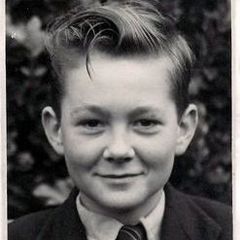
img20240212_14222638.jpg
Alan Edgar (Eggy1948) commented on John S Smith's gallery image in Historic Bedlington
- Last week
-

Humford_Water_Works.jpg
Alan Edgar (Eggy1948) commented on Alan Edgar (Eggy1948)'s gallery image in Historic Bedlington
-

Humford Mill Waterworks & Swimming Baths
Images added to a gallery album owned by Alan Edgar (Eggy1948) in Historic Bedlington
Historically, Humford, a tiny hamlet, consisted of only two houses on two separate sites – the Waterworks that were later converted into 'Humford Open Air Swimming Baths' and now the area is part of the Bedlington Country Park Local Nature Reserve. -
Cheers Toontimes
-
Humford_Water_Works.jpg
Kirnee commented on Alan Edgar (Eggy1948)'s gallery image in Historic Bedlington
My great grandpa, Bedlington native, Thompson Fawcett (1873-1953) was the Engineer at Humford Mill for many years. He always wore a trilby and had a bushy white moustache (he may the suited gentleman on the right in the photo above). They lived at the mill in the house on the left with the bay window (the 1911 census lists Thompson, his wife Margaret and daughter Laura. Thompson is listed as Stationary Engineerman). Earlier (1901 census) he worked at the pit until he was injured in a pit incident. By 1904 he was working at the Waterworks as he hosted the wedding reception for Sam Mortimer and Isabella Swann at the house at the waterworks 26 Sept, 1904. (I will post a picture if I can find it.) When the waterworks shut (or possibly earlier) he and his wife moved to Hepscott where he tended some pit ponds. -
Kirnee joined the community
-
-
Hello Lee - I am the person creating the toontimes website. I had a Quick Look on the BNA website for your grandfather and found a couple of snippets from 1927 - I’ll do a bit more looking over the coming weeks and post again.
-
Toontimes joined the community
-

Shiney Row2.jpg
Alan Edgar (Eggy1948) commented on Alan Edgar (Eggy1948)'s gallery image in Historic Bedlington
-
Sorry, this is in bits and pieces ... As Mr Boll Sr. was schoolmaster at the village school throughout his career then I think it's fair to assume that this is him (standing at the back) in the photo from 1902. He bears a bit of a resemblance to the man standing centre back (with moustache) in the group photo.
-
William Henry Jr was born in Netherton Village and like his father went into teaching. In 1916, living in School House with his parents, he goes to war. Luckily he survives and in 1921 he is engaged in full-time studies to become a teacher. He marries a Newcastle girl in 1929 and they move away from the area at some point within the following 10 years. Certainly in 1939 he is living in Penrith and employed as a schoolmaster but he and the family seem to move back to Newcastle as he dies there in 1963. I have never been able to find any evidence that either of the two worked in the infant school in the colliery. I've scrutinised the group above and if it is correctly dated to 1912 Mr Boll Sr would be 50 years old. Mr Boll Jr. would be 14 years old. The latter could be one of the older boys but I don't know if there are any 50 year-olds there. It seems like a family group to me.
-
Sorry, half of my post disappeared because I took too long editing (I must learn how to add photos throughout the text!) To continue where I left off... He was born in 1862 and seems to have done very well for himself. By the age of 18 he was a "pupil teacher' in West Hartford where the family then lived due to his father's work. Ten years later the family is living in Nedderton Village where William Henry Junior is schoolmaster at the school and his father is again working in one of the Netherton mines. His home is then "School House, Netherton Village". The year is 1891 and that "School House" may well have been within the school itself. By 1901 William Henry is a "Certified Elementary Schoolmaster" and he remains at School House throughout his career. He was certainly still there in 1929 and still working. In 1911 the building in which he lived is described as a "Council School and private house" which is why I think the accommodation may have been in the school building. It is not until 1920 that School House appears on any maps I've seen and that's the brick-built house immediately to the right of the old school building (marked red on the map below). I've also arrowed the previously mentioned Rowanbrae in blue. It's at this address William Henry Sr, lives until at least his retirement. Prior to it's appearance on this map the land to the east of the school was without buildings.
-
No, I don't remember Mr & Mrs Boll from the 1960s but if there was a Mr Boll living to the left of the school in the 60s then it wasn't Mr Boll the schoolmaster because he died in 1950. However, he did die at Rowanbrae which still stands today somewhat to the left of the school building and adjacent to the old hall. There were two 'Mr Boll' - father and son both named William Henry and both School teachers. Mr Boll Sr was actually born in Netherton in Old Colliery Row which was very close to what we know as Nedderton Village. His father was a miner.
-
I would have thought our Ian would have welcomed this further blow at the heart of capitalism! Surely this helps in Labour's quest to make everyone totally dependent on the state? Everyone, including the floods of illegals that Starmer intends to continue to attract.
-
TSB has announced the town's final bank on Front Street will closeView the full article
-
There is no "convincing evidence" to support safety concernsView the full article
-

Netherton schoolmaster
Alan Edgar (Eggy1948) commented on Carole's gallery image in Historic Bedlington

